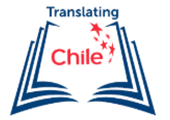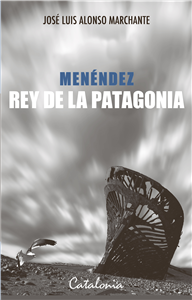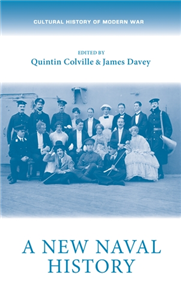Your Search Results
-
Longleaf Rights Management
Representing rights for Duke University Press, Syracuse University Press, University of Georgia Press,University of Nebraska Press,University of New Mexico Press, University of North Carolina Press, Vanderbilt University Press and University of West Indies Press
View Rights Portal
-
Promoted Content
-
Promoted ContentApril 2007
Mein andalusisches Schwarzwalddorf
Essays
by José F. A. Oliver
»Denn gleich dahinter, hinter dem Waldbergigen, hinter der Dämmerlinie der schweren, schwarzgrünen Tannen, lag Andalusien.Auch für mich.« Im Jahr 1960 kamen José F. A. Olivers Eltern auf der Suche nach Arbeit aus Málaga nach Deutschland und zogen in eine kleine Stadt im Schwarzwald. Dort wuchs er auf, als Andalusier und Alemanne zugleich. Erinnerungen an den Vater, die Strohhutfabrik, die Hausacher Spättlemadlee, die Fasent der Kindertage verdichten sich in seinen Essays und Texten zu Bildern eines Ortes, den es nicht geben kann und dennoch gibt, eines andalusischen Schwarzwaldes. Als Dichter zwischen den Kulturen, zwischen den Sprachen gibt Oliver Auskunft über die Erfahrungen eines »Gastarbeiterkindes«, dessen poetische Sensibilität der Zweisprachigkeit entspringt: »ich, Wortmensch Erde, will Sprachen wie Gastgeber Freunde.« José F.A. Oliver, geboren 1961 in Hausach im Schwarzwald. Seine Gedichte sind in mehrere Sprachen übersetzt.
-
 Trusted Partner
Trusted Partner
nachtrandspuren
Gedichte
by José F. A. Oliver
Fernab vom alltäglichen Wortge- und -verbrauch schafft José F.A. Oliver, Chamisso-Preisträger von 1997, Klanggehäuse, in denen sich die Laute scheinbar spielend zu neuen Bedeutungen zusammenschließen. Die Gedichte sprechen vom Unterwegssein und vom Ankommen, von einer Sehnsucht nach Ursprünglichkeit, vom Pulsen im »sprachherztakt«. Olivers sprachmagische Gedichte wollen »uns lösen / vom schweren zungenschlag«, also von der tagtäglichen Sprache und zurückführen zu ihrem eigentlichen Ursprung: dem Klang. Der 1961 geborene Lyriker andalusischer Herkunft, aufgewachsen im Schwarzwald, moduliert die Sprachpartikel auf immer überraschende Weise; mit feinem Sensorium spürt er den Faltenwürfen der Wörter nach und stößt dabei auf bislang Ungehörtes. »José Oliver hat seine Poesie ganz tief in die deutsche Sprache eingeschrieben, eingegraben, ja, die deutsche Sprache mit ihr umgegraben«, schrieb Harald Weinrich.
-
 Trusted Partner
March 2010
Trusted Partner
March 2010fahrtenschreiber
Gedichte
by José F. A. Oliver
»& weiß nicht mehr in welcher stadt / ich war ich bin ich werde sei / so wie es jetzt am anfang war / gebet & uhrzeit sind verlegt / / 1 datum hinter glas. So könnte es gewesen.« Der Schreibnomade José Oliver ist auf steter Wörterreise. Ägypten, Dubai, Spanien, Slowakei, Schweiz, Niederlande, Litauen und immer wieder zurück zum Ausgangspunkt, in die fremde Heimat Schwarzwald, in den Zwischenraum zweier Sprachen, zum Glauben, in die Kindheitserinnerungen. Und das lyrische Ich notiert als unbestechlicher Fahrtenschreiber die Wahrnehmungsgeschwindigkeit in ihren Schwankungen, die Unhaltbarkeit der Bilder, grenzzerfließende Begegnungen, das Verhältnis von Zeit und Weg; Wiege, Baum und Kreuz – das Alphabet der Hölzer. »Der nomadische Heimatdichter José Oliver weiß genau, wie erfaßbar uns die ganze Welt und wie unverständlich uns das benachbarte Tal erscheinen kann. Dies ist das Privileg großer Dichter.« Ilija Trojanow
-
 Trusted Partner
August 2006
Trusted Partner
August 2006unterschlupf
Gedichte
by José F. A. Oliver
José F. A. Oliver legt mit diesem Gedichtband sein viertes Buch im Suhrkamp Verlag vor. Sprache aus dem Bekannten herauszuhebeln, zu entzingeln, um ihr in neuen Klangelementen eine Aussagekraft zu verleihen, die über das allzu Verständliche hinausreicht, ist seine Art, auf die Rätselhaftigkeit der Welterfahrung aufmerksam zu machen. Den Blick zu ändern. Die Gedanken zu öffnen. Grenzen zu überschreiten. Sein »seelenfernglas « auf das bislang Ungesagte, Unsagbare gerichtet, die Liebe und den Tod vor Augen, ist er »schreibspur ganz / & der sich an die rücken heftet«. Mehrstimmig durchsiebt er die Sprache, »den worttrieb im zettelkasten «, erfindet und fügt neu zusammen. Olivers Gedichte entstehen sowohl aus zeitund ortsenthobenen Erlebnissen als auch aus Beobachtungen auf intensiven Reisen, so z.B. »1 vision in Kairo«. Er schreibt »die welt / die keine klärung war / die keiner klärung mehr bedurfte« und sucht »das unbestimmte des bestimmten«. Seine Gedichte gewähren den Sinnen unterschlupf, mindestens »1 Pessoa lang«.
-
 Trusted Partner
2014
Trusted Partner
2014Menéndez King of Patagonia
DN
by José Luis Alonso M
A rigorous and well-documented account of the genocide of indigenous peoples and the appropriation of land in southern Chile by European settlers. The definitive biography of José Menéndez (the Spaniard who became one of the richest men in the world) and his role in these crimes.
-
 Trusted Partner
Humanities & Social SciencesApril 2022
Trusted Partner
Humanities & Social SciencesApril 2022A new naval history
by Quintin Colville, James Davey, Katherine Parker, Elaine Chalus, Evan Wilson, Barbara Korte, Cicely Robinson, Cindy McCreery, Ellie Miles, Mary A. Conley, Jonathan Rayner, Daniel Spence, Emma Hanna, Ulrike Zimmerman, Max Jones, Jan Rüger
A New Naval History brings together the most significant and interdisciplinary approaches to contemporary naval history. The last few decades have witnessed a transformation in how this field is researched and understood and this volume captures the state of a field that continues to develop apace. It examines - through the prism of naval affairs - issues of nationhood and imperialism; the legacy of Nelson; the socio-cultural realities of life in ships and naval bases; and the processes of commemoration, journalism and stage-managed pageantry that plotted the interrelationship of ship and shore. This bold and original publication will be essential for undergraduate and postgraduate students of naval and maritime history. Beyond that, though, it marks an important intervention into wider historiographies that will be read by scholars from across the spectrum of social history, cultural studies and the analysis of national identity.
-
 Trusted Partner
Technology, Engineering & AgricultureSeptember 2018
Trusted Partner
Technology, Engineering & AgricultureSeptember 2018A History of Pesticides
by Graham A Matthews
In this fascinating book, Graham Matthews takes the reader through the history of the development and use of chemicals for control of pests, weeds, and vectors of disease. Prior to 1900 only a few chemicals had been employed as pesticides but in the early 1940s, as the Second World War raged, the insecticide DDT and the herbicide 2-4-D were developed. These changed everything. Since then, farmers have been using a growing list of insecticides, herbicides and fungicides to protect their crops. Their use has undoubtedly led to significant gains in agricultural production and reduction in disease transmission, but also to major problems: health concerns for both users of pesticides and the general public, the emergence of resistance in pest populations, and environmental problems. The book examines the development of legislation designed to control and restrict the use of pesticides, the emergence of Integrated Pest Management (IPM) and the use of biological control agents as part of policy to protect the environment and encourage the sustainable use of pesticides. Finally, the use of new technologies in pest control are discussed including the use of genetic modification, targeted pesticide application and use of drones, alongside basic requirements for IPM such as crop rotations, close seasons and adoption of plant varieties with resistance to pests and diseases.
-
 Trusted Partner
July 2001
Trusted Partner
July 2001Iwan S. Turgenjew
Eine Biographie
by Juan Eduardo Zúñiga, V. A. Brobor, Peter Schwaar
Peter Schwaar, geboren 1947 in Zürich, dort Gymnasium und Abitur, literatur- und musikwissenschaftliche Studien in Zürich und Berlin, Redakteur Kultur und Lokales beim Zürcher Tages-Anzeiger. Seit 1987 freier Übersetzer und Autor. Übertragungen aus dem Spanischen von Eduardo Mendoza, Carlos Ruiz Zafón, Tomás Eloy Martínez, Juan José Millás, David Trueba, Zoé Valdés, Adolfo Bioy Casares, Francisco Ayala, Javier Tomeo, Álvaro Mutis, Jorge Ibargüengoitia u.a. Lebt in Barcelona.
-
 Trusted Partner
December 2008
Trusted Partner
December 2008Die Kubanische Revolution und wie erkläre ich sie meinem Taxifahrer
by José Manuel Prieto, Susanne Lange
Ob New York, Rom, Wien oder Berlin – immer wenn der Kubaner José Manuel Prieto von einem Taxifahrer gefragt wird, woher er denn sei, hört er ein begeistertes »Ah, Fidel Castro!« Wie kommt es zu diesem vital strahlenden Bild der kubanischen Revolution und Fidel Castros? Hat die Wirklichkeit nicht längst alles Triumphale abgeschabt? In sehr persönlichen, nicht eifernden, eher schmerzvollen kleinen Schritten rekapituliert Prieto Momente der Kindheit, als Politik keine Sache des Urteils war, sichtet die öffentlichen und die intimeren Aspekte Kubas. Dabei meißelt er keine Eindeutigkeiten heraus, er schildert die Dinge vielmehr als unausweichlich komplex und ambivalent.
-
 Trusted Partner
March 2004
Trusted Partner
March 2004Liwadija
Roman
by Susanne Lange, José Manuel Prieto
José Manuel Prieto, 1962 in Havanna geboren, studierte Ingenieurwissenschaften in Nowosibirsk in der ehemaligen UdSSR, wo er nach dem Diplom weitere 12 Jahre lebte und die verschiedensten Berufe ausübte. Er übersetzte u.a. Werke von Anna Achmatowa, Andrej Platonow, Wladimir Majakowski, Gennadij Ajgi, Marina Zwetajewa, Joseph Brodsky, Alexander Solschenizyn und Vladimir Nabokov ins Spanische. Mit seiner russischen Frau und seiner Tochter lebt er in Mexiko-Stadt, wo er russische Geschichte lehrt. Prieto ist der Autor der Romane Enciclopedia de una vida en Rusia (1998, Neuausgabe 2004) und Livadia (1999). Er veröffentlichte außerdem das Reisetagebuch Treinta días en Moscú (2002) und den Erzählband El tartamudo y la rusa (2002). Sein Roman Livadia wurde bislang ins Englische, Französische, Niederländische, Italienische und Hebräische übersetzt.
-
 Trusted Partner
October 1992
Trusted Partner
October 1992Die amerikanische Ausdruckswelt
by José Lezama Lima, Gerhard Poppenberg, José Prats Sariol, Carlos Fuentes
José Lezama Lima (1910 - 1976) wurde in La Habana geboren. Er studierte Jura und praktizierte als Rechtsanwalt - lebenserhaltender Nebenberuf dieses umfassend gebildeten und belesenen Dichters. Er wurde später zum Leiter der Literatur- und Publikationsabteilung des Consejo Nacional de Cultura, des kubanischen Kulturrates, und ab 1962 betätigte er sich als Vizepräsident des kubanischen Schriftsteller- und Künstlerverbandes (UNEAC). Außerdem wurde er zum Assessor im Literaturinstitut der Academia de Ciencias, der Wissenschaftsakademie, ernannt. Er verließ Kuba insgesamt nur zweimal, als er 1949 Jamaika und 1950 Mexiko besuchte. Seinem Roman Paradiso (1966), der ihm weltweite Anerkennung einbrachte, waren seit 1937 avantgardistische Lyrik und Essays vorausgegangen. Lezama Lima gab die literarische Zeitschrift Orígenes heraus, die bald zu den wichtigsten hispanoamerikanischen Kulturzeitschriften zählte. Sowohl Paradiso als auch Orígenes waren von außerordentlich hoher Bedeutung für das kubanische Geistesleben und entwickelten sich zu starken Bezugspunkten für das literarische Schaffen in Kuba und Lateinamerika. Lezama Lima gab außerdem die Zeitschriften Verbum (1937), Espuela de Plata (1939- 41) und Nadie parecía (1942- 44) heraus. In seinem ebenfalls berühmten Essay La expresión americana (dt. Die amerikanische Ausdruckswelt) - wie alle Werke von Lezama Lima sehr komplex und außerordentlich gebildet - geht er der lateinamerikanischen kulturellen Identität nach und prägt für sie den Begriff des "Barocken". Julio Cortázar und Mario Vargas Llosa haben, was seine Bedeutung für die Weltliteratur angeht, den Roman Paradiso mit Marcel Prousts Auf der Suche nach den verlorenen Zeit und James Joyces Ulysses verglichen
-
 Trusted Partner
February 1991
Trusted Partner
February 1991Die Schwester, die Feindin
Erzählungen
by Monika López, Monika López, José Revueltas
José Revueltas wurde 1914 in Durango (Mexiko) geboren. Er stammte aus einer in einfachen Verhältnissen lebenden Familie, deren Kinder auf unterschiedlichen künstlerischen Gebieten Berühmtheit erlangten. Noch während seiner Schulzeit trat er der Kommunistischen Partei seines Landes bei. 1929 wurde er erstmals wegen Aufruhrs verhaftet. Danach arbeitete er als Journalist, bevor er 1934 wegen 'subversiver Tätigkeit' erneut angeklagt und zu mehreren Jahren Haft verurteilt wurde. 1961 trat er aus der Partei aus und gründete die trotzkistische Liga Espartaco. 1975 gründete er die politisch engagierte Literaturzeitschrift 'Cambio'. Revueltas' Œeuvre umfaßt Romane, Erzählungen, Dramen und Essays, in denen sein politisch engagiertes Leben deutliche Spuren hinterlassen hat. So sind seine vornehmlichen Motive soziale Ungerechtigkeit, sexuelle wie auch moralische Konflikte und Verbrechen, die er mittels neuer Erzähltechniken zu inszenieren weiß. Zu seinen bekanntesten Werken gehören der Roman El luto humano ('Menschentrauer'), und die Erzählung El apando (dt. 'Eingelocht', 1991) von 1969. Revueltas war einer der wenigen lebenslang konsequenten Rebellen im Mexiko der Nach-revolutionsära. Er starb 1976 an den Spätfolgen eines Hungerstreiks in Mexiko Stadt.
-
 Trusted Partner
Children's & YAMarch 2020
Trusted Partner
Children's & YAMarch 2020Amelie Trott and the Earth Watchers
by Moyra Irving
This is the extraordinary story of how one small girl stopped a planetary catastrophe. It’s a very timely book, written for the child in us all, with a forceful message about the power of young people to transform the world - a theme currently demonstrated by brave young heroes like Greta Thunberg. And with magical synchronicity, the very week Greta began her lone vigil outside the Swedish government last year, over 1,000 miles (1,897 km) away in the fictional world of books, Amelie Trott took to Parliament Square, London - on a mission to avert the End of the World. It’s a family drama with an international feel - set mainly in England but with episodes in Washington DC and around the world.
-
 Trusted Partner
Trusted Partner
Born in A Great Era
by A Record of Changes in Contemporary Lifestyle
1978-2018, a big era. Reform and opening up have profoundly affected the changes in the way of life of the Chinese people. The manuscript replays the development of social life in China over the past 40 years of reform and opening up. It mainly sorts out the great changes in our lives in the past 40 years from the aspects of clothing, food, housing, market, love, and play. Adhering to the purpose of "a magazine and the body temperature of an era", the manuscript has a unique perspective and rich details, which can be regarded as a brief history of alternative life with warmth in this era.
-
 Trusted Partner
Children's & YAOctober 2021
Trusted Partner
Children's & YAOctober 2021The Lost Smile
by Nadia L. King / Nelli Aghekyan
When Zaytoon wakes up feeling sad, she goes on a search to find her smile. From the kitchen to the garden, Zaytoon searches high and low,and eventually discovers her smile — it’s smiling at her from her reflection in the window! The Lost Smile is beautifully illustrated colourful picture book that demonstrates the importance of accepting our emotions. Zaytoon’s journey shows children it’s okay to be sad and reassures young readers that sadness can be temporary. Themes include cultural diversity, emotional intelligence, family life and the importance of connecting with nature and animals.
-
 Trusted Partner
Humanities & Social SciencesDecember 2018
Trusted Partner
Humanities & Social SciencesDecember 2018A new naval history
by James Davey, Quintin Colville, Katherine Parker, Elaine Chalus, Evan Wilson, Barbara Korte, Cicely Robinson, Cindy McCreery, Ellie Miles, Mary A. Conley, Jonathan Rayner, Daniel Spence, Emma Hanna, Ulrike Zimmerman, Max Jones, Jan Rüger
-
 Trusted Partner
Children's & YA
Trusted Partner
Children's & YAA oficina do Cambeva (Cambeva's workshop)
by Lido Loschi
Cambeva's workshop is the first of four books of the collection "Presente de Vô" in partnership with Grupo Ponto de Partida. The book is a mixture of colours and elements that highlight the memory of the world, in which seekers of memories have the mission of bringing light and life to objects found in the travels of two characters: Zalém and Calunga. Cambeva is a restorer who, when the world lost its embrace, tried to reinvent it; he is the grandfather who mends dreams, forgotten things and lost emotions, to whom the seekers ask for help to fix something. In a magical universe, full of children, grandchildren, stories and memories of his lineage of restorers, when faced with this request for restoration, he makes room to bring back an emblematic figure who can no longer sing. A story about memories, care and affection...
-
 Trusted Partner
March 2005
Trusted Partner
March 2005finnischer wintervorrat
Gedichte
by José F. A. Oliver
»Er sieht genau hin, er hört genau hin und findet das ungehörte, unerhörte Wort, das Sprache und innerste Erfahrung zur Übereinstimmung bringt. Oliver klopft die Worte ab, um ihnen einen Laut wiederzuschenken, den sie irgendwann verloren haben.« Joachim Sartorius
-
 Trusted Partner
Trusted Partner

































